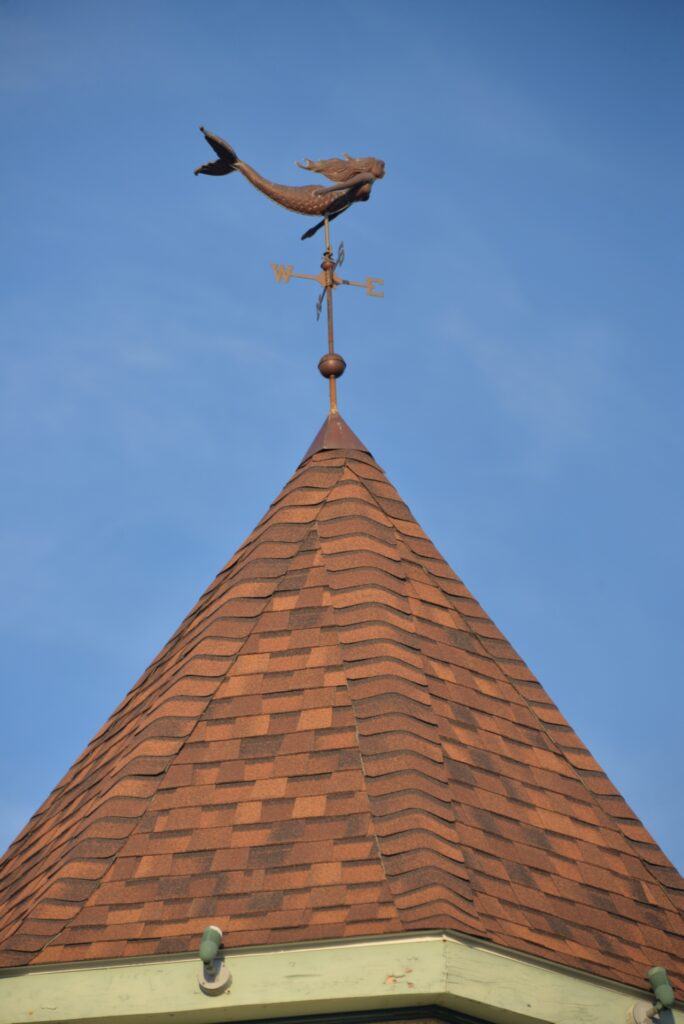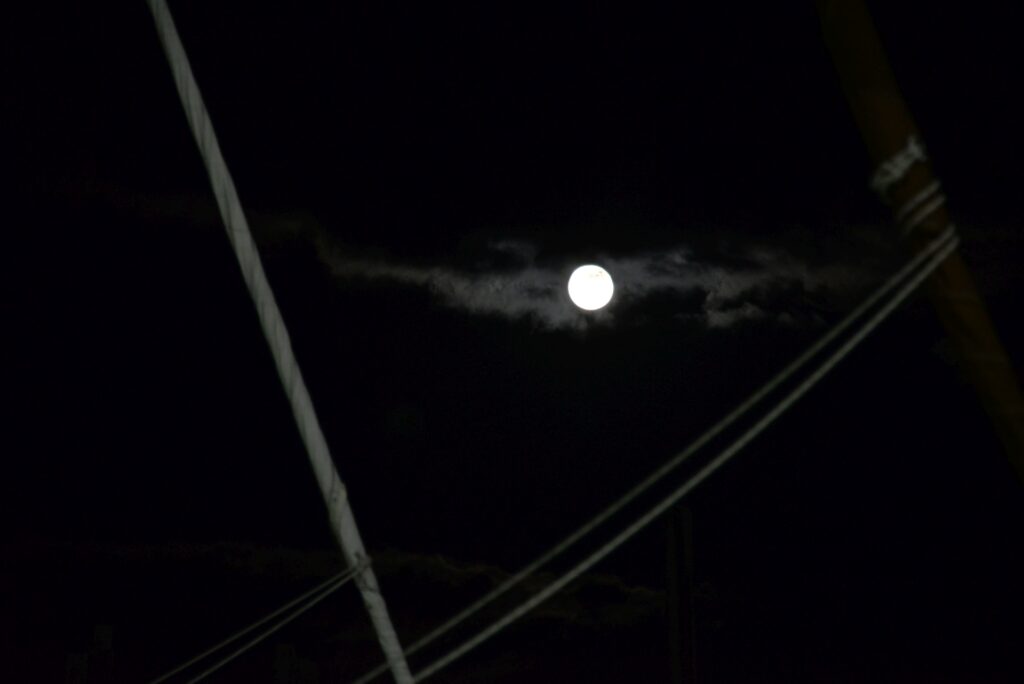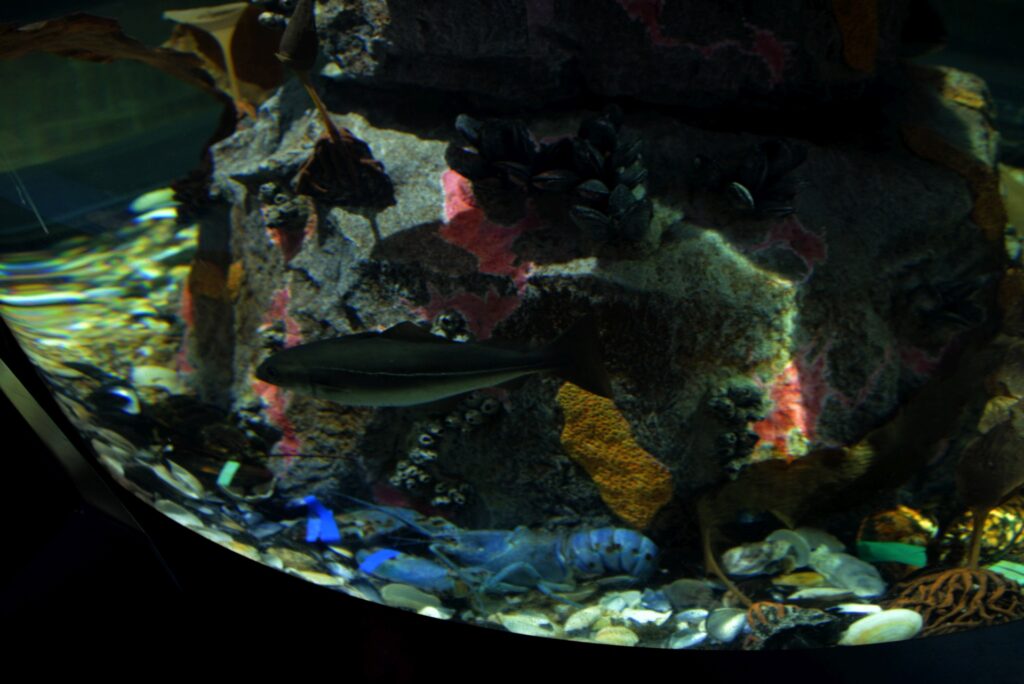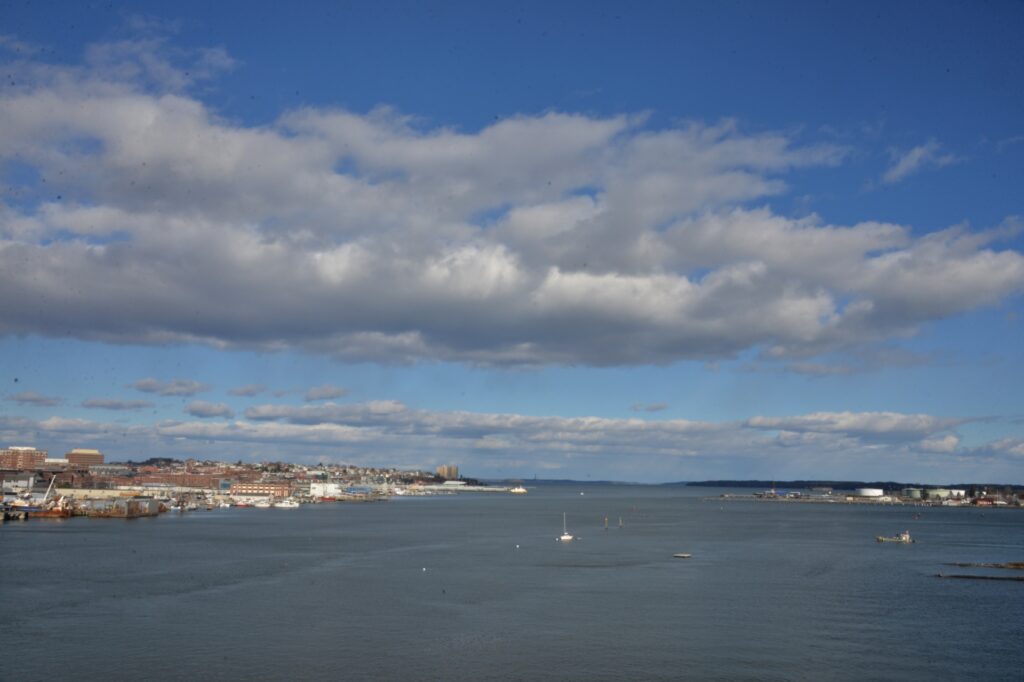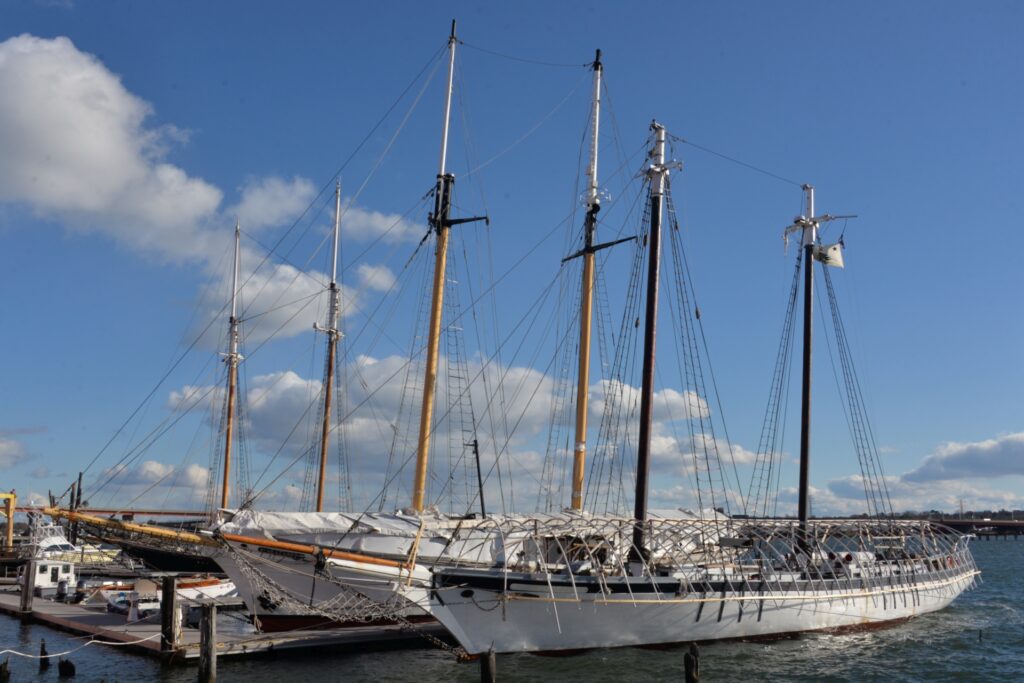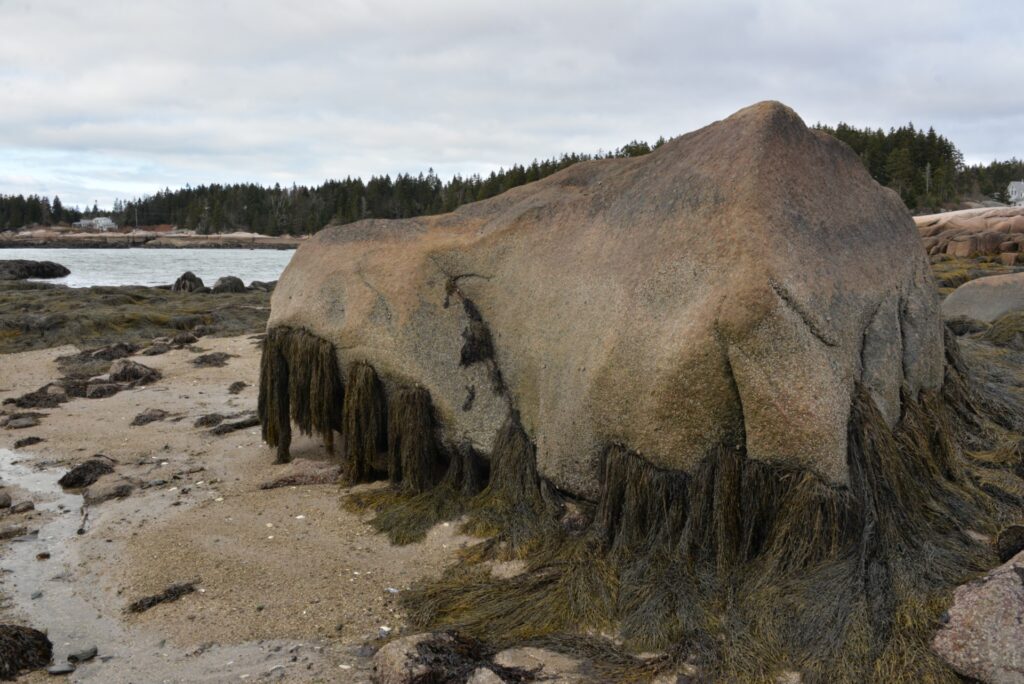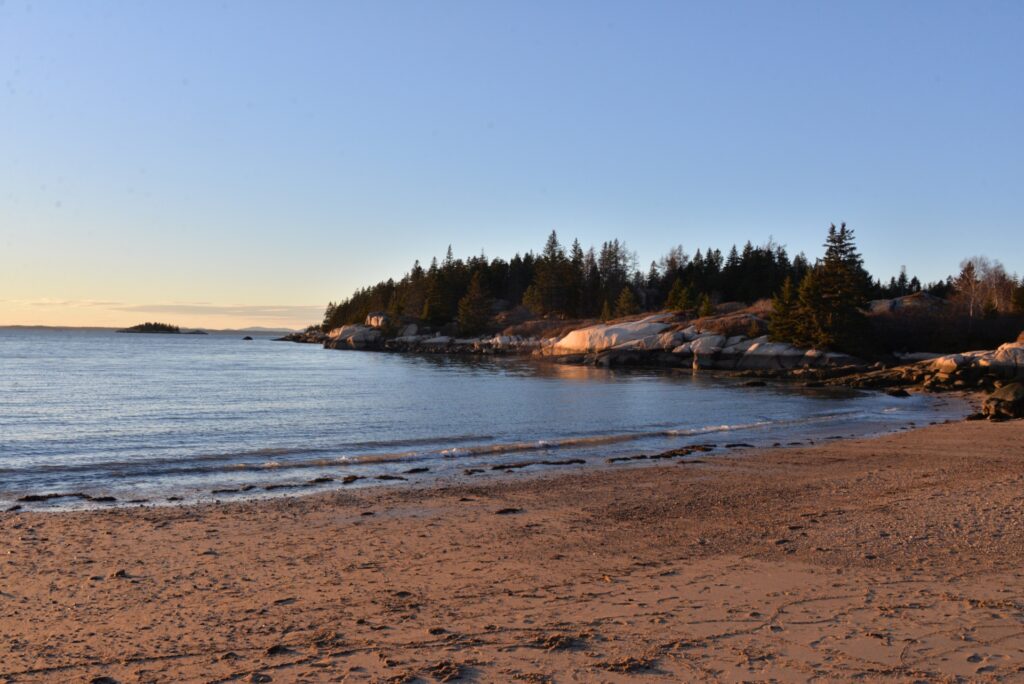Our prolonged stay in Maine brought challenges with the progressively colder weather, with nighttime temperatures dropping to -8 degrees Celsius. This not only affected our living conditions on the yacht but also posed difficulties starting our engine. Navigating along the coast presented its own set of challenges, particularly in avoiding lobster traps. We found ourselves entangled with these traps a few times, struggling to free the keel from their clutches.
To tackle this, we decided to sail directly from Portland to Cape Cod—a 110-mile journey to the entrance of the Cape Cod Channel, feasible with a night passage. This marked our third night passage, and we felt seasoned in handling night watches. The weather was brisk, with winds reaching up to 20 knots. However, the waves posed a significant hurdle, with oncoming waves reaching up to 2 meters, turning our sailboat, laden with all its weight, into a mere toy on the waves.
Dawn brought relief, and after a few more hours, we reached the eastern entrance to the Cape Cod Channel. Here, we had to wait for an hour for a favorable current. It’s noteworthy that the current in the channel, influenced by the tide, can reach speeds of up to 4 knots. Getting caught in a counter-current could drop the yacht’s speed to 2-3 knots, while a passing current could propel it to 10 knots.
We navigated the canal at speeds of up to 10 knots, passing under two road bridges and one railway drawbridge. Exiting the canal, we reached Safe Harbor Onset Marina, where the staff warmly welcomed us to the deserted marina and even offered a free overnight stay on the dock! This marked a departure from our experiences in Maine marinas (we were in Massachusetts now!), perhaps because we didn’t encounter the fishing boats that filled the Maine marinas here.
The village of Onset exemplifies a resort destination, boasting splendid new marinas, sandy beaches, waterfront parks, and seafood restaurants. We dined at Stonebridge, relishing clamp chowders for lunch while engaging in pleasant conversation with the friendly waitress and another boater who had just arrived on his motorboat – it looked like we were the only visitors in the village. The next morning, we bid farewell to the hospitable Onset, greeting the dawn and setting sail while conducting CTD cast in the bay.






























